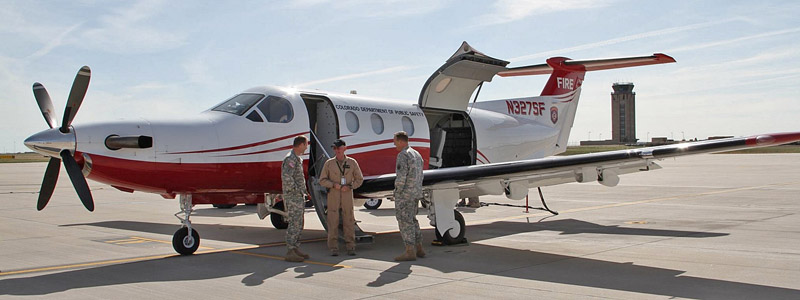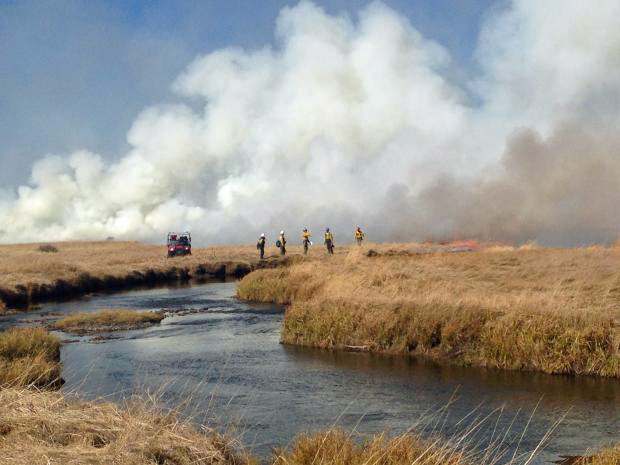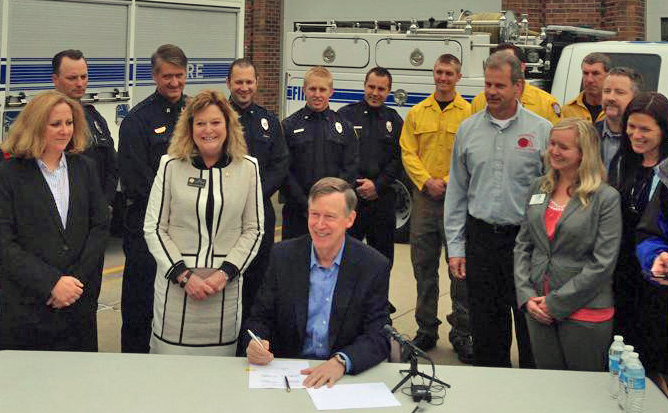
The two Multi Mission Aircraft (MMA) recently purchased by the Colorado Division of Fire Prevention and Control could be significant progress toward what we have called the Holy Grail of Firefighter Safety — knowing the real time location of a wildfire and firefighters.
The Pilatus PC-12 single-engine aircraft have sensors on board combined with communications and software capabilities that can provide a version of the Holy Grail to office-bound fire managers as well as firefighters on the ground.
Operating well above firefighting air tankers and helicopters, the MMAs have two cameras, color and infrared. The color camera provides video similar to that used by news helicopters orbiting over a wildfire in California. The heat-detecting infrared sensor can map the location of large fires and can find small ones that can be difficult or impossible to spot from the air using just human eyesight. The cameras can be used to monitor the locations of firefighters on the ground, however their identities or resource designators would not be automatically provided.
The suite of communications and software, called Colorado Wildfire Information Management System (CO-WIMS), transmits the data from the sensors in a usable form to a network where it can be accessed by authorized personnel in offices, fire apparatus, and firefighters on the ground with hand held devices.
Half of the Holy Grail appears to be provided with the MMAs — the real time or near-real time location of the fire. The other half, knowing the location of firefighters, can be determined to a certain extent, but only if the equipment operator devotes a significant amount of their time using the cameras to follow personnel and equipment on the ground. On a small fire this could be done while still maintaining the big picture of the spread of the fire, but on large incidents with hundreds or thousands of resources, it would be impossible. However, if a crew reported that they were in a dangerous situation (think Yarnell Hill Fire, where 19 firefighters died), perhaps the operator could use the infrared and visual sensors to locate them and relay that information to resources on the ground or in the air that could provide assistance.
The wildland firefighting agencies still need to adopt hardware and communications systems that can track every piece of apparatus, crew, and any resource operating alone on the fireline. That information could then be accessed on a display that could be monitored, at a minimum, by a Safety Officer, and others as needed; eventually by fire supervisors with hand held devices.
Some of the air attack aircraft under federal contract either have or will have video capabilities similar to that on Colorado’s MMAs, but a system needs to be utilized by the U.S. Forest Service and other agencies that can make it usable to firefighters on the ground. Colorado has provided a template proving it can be done.
The CO-WIMS being used now by Colorado to provide real time intelligence is a huge step forward. While the state is far from developing a comprehensive organization for responding to and managing wildland fires, they deserve kudos for what they have already implemented with the MMAs and CO-WIMS.
It’s kind of like a homeless person being given a pair of $500 shoes. It’s a nice addition to their wardrobe, but there is still more that needs to be done.
More information: A .pdf version of a DCFPC presentation about the MMA and CO-WIMS at the October 21-23, 2015 Colorado State Fire Chiefs Fire Leadership Conference.
The following videos demonstrate some of the intelligence gathering capabilities of the MMA:
Continue reading “Colorado’s Multi Mission aircraft enhance firefighter safety”


